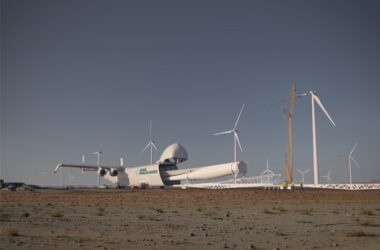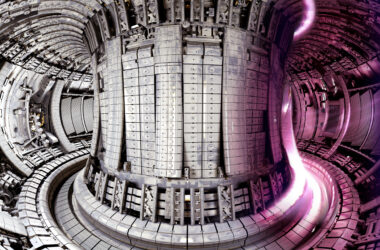In the realm of renewable energy, geothermal power holds a unique position. Tapping into the Earth’s natural heat offers a clean, sustainable solution for our ever-increasing energy demands.
A significant step forward in this direction is underway in Cornwall, UK, with the Langarth Deep Geothermal Heat Network, which recently received a substantial £22 million in government funding.
The funding is part of the Green Heat Network Fund (GHNF), an initiative by the UK government to decarbonize heat across the country. The heat we use in our homes and businesses predominantly comes from gas or electricity, often generated by burning fossil fuels. The Langarth project, spearheaded by Geothermal Engineering Limited (GEL), is set to alter this scenario, presenting a cleaner, sustainable alternative.
Understanding geothermal energy involves recognizing its origin. It is the heat from the Earth’s core. This heat is a sustainable energy source, accessed by drilling deep into the Earth’s crust. The Earth’s interior contains pockets of hot water and steam trapped in porous rock. This heat potential is the target of geothermal projects like Langarth.
The Langarth Deep Geothermal Heat Network involves an ambitious plan. A borehole will be drilled to a depth of approximately 5,275 meters. To put this into perspective, that is about five times the height of Ben Nevis, the UK’s highest peak. At this depth, the geothermal borehole will tap into the heat from granite rocks beneath the United Downs Industrial Site in Cornwall.
This heat will be harnessed and distributed to provide hot water and heating for around 3,800 homes and regional public facilities.

The process of harnessing geothermal energy is quite remarkable. The geothermal well will draw up hot, pressurized water from the depths of the Earth. This water will then be depressurized, causing it to flash into steam. The steam will then be used to drive turbines for electricity generation, with the remaining heat energy used to provide heating for homes and facilities. Once the heat has been extracted, the water will be re-injected back into the ground, maintaining the sustainability of the process.
The project is expected to have significant environmental benefits. Notably, it is anticipated to save an estimated 5,000 tonnes of CO2 emissions annually, significantly contributing to the UK’s Net Zero and Energy Security goals. Additionally, the local residents will likely benefit from cheaper heating costs, a positive socio-economic impact of this sustainable initiative.
By 2028, GEL plans to expand its geothermal portfolio across Cornwall to power 70,000 homes. This project and the other six funded under the GHNF exemplify the UK’s commitment to a sustainable energy future.
While the Langarth project is essential, it is just one part of a broader movement towards sustainable heat and power.
The project is one of seven projects allocated a portion of the £91 million from the UK government’s Green Heat Network Fund (GHNF). This scheme was opened in March 2022 and is anticipated to run until 2025. The GHNF is open to public, private, and third-sector applicants in England and has a total funding pool of £288 million. The other projects that have received funding are across England, ranging from London and Reading to Rotherham and Bradford, indicating a nationwide commitment to sustainable heat networks.
Ken Hunnisett, programme director for Triple Point Heat Networks Investment Management, the delivery partner for the GHNF, underlined the importance of these targeted initiatives. He said, “Continuing the legacy of the first GHNF projects to be announced in December, over £91 million more targeted support has been announced from the fund today to deliver low carbon heating across the country.” These funding commitments underscore the UK’s dedication to achieving its net zero ambitions, providing clean heating solutions for residential and commercial buildings nationwide.
The United Downs site in Cornwall, already under development by Geothermal Engineering Limited (GEL), is planned to generate baseload electricity and heat energy from the granite deep below. Investors Kerogen Capital anticipate that the site will start producing power in 2024, with the first plant delivering 2MW of baseload electricity and up to 10MWth of zero carbon heat. Jason Cheng, CEO and co-founder of Kerogen Capital, expressed his enthusiasm about the £22 million funding announcement, saying, “This will help deliver one of the UK’s largest zero-carbon heat networks, and the first supplied by geothermal energy from GEL’s United Downs development. The network will benefit thousands of local residents and businesses, and save an estimated 5,000 tonnes per year of CO2.”
As we continue seeking innovative solutions to our energy needs, projects like the Langarth Deep Geothermal Heat Network are encouraging milestones on our journey towards a sustainable future. The world’s energy landscape is shifting, and with initiatives like these, the UK is demonstrating its commitment to leading this change.
TLDR
- The UK government has allocated £22 million in funding to the Langarth Deep Geothermal Heat Network project in Cornwall as part of the Green Heat Network Fund (GHNF).
- Geothermal energy is obtained by drilling deep into the Earth’s crust to access heat from the Earth’s core.
- The Langarth project involves drilling a borehole approximately 5,275 meters deep to tap into the heat from granite rocks beneath the United Downs Industrial Site in Cornwall.
- The extracted heat will provide hot water and heating for around 3,800 homes and public facilities.
- The geothermal well will draw hot water, depressurized to flash into steam. The steam will drive turbines for electricity generation, and the remaining heat energy will be used for heating.
- The project is expected to save 5,000 tonnes of CO2 emissions annually and contribute to the UK’s Net Zero and Energy Security goals.
- The Langarth project is part of a broader movement towards sustainable heat and power in the UK.
- The GHNF has allocated £91 million to seven projects across England, indicating a nationwide commitment to sustainable heat networks.
- The United Downs site in Cornwall, developed by Geothermal Engineering Limited (GEL), is planned to generate baseload electricity and heat energy from the granite deep below.
- The Langarth project is a significant step towards achieving a sustainable future and demonstrates the UK’s commitment to leading the transition to clean energy.








